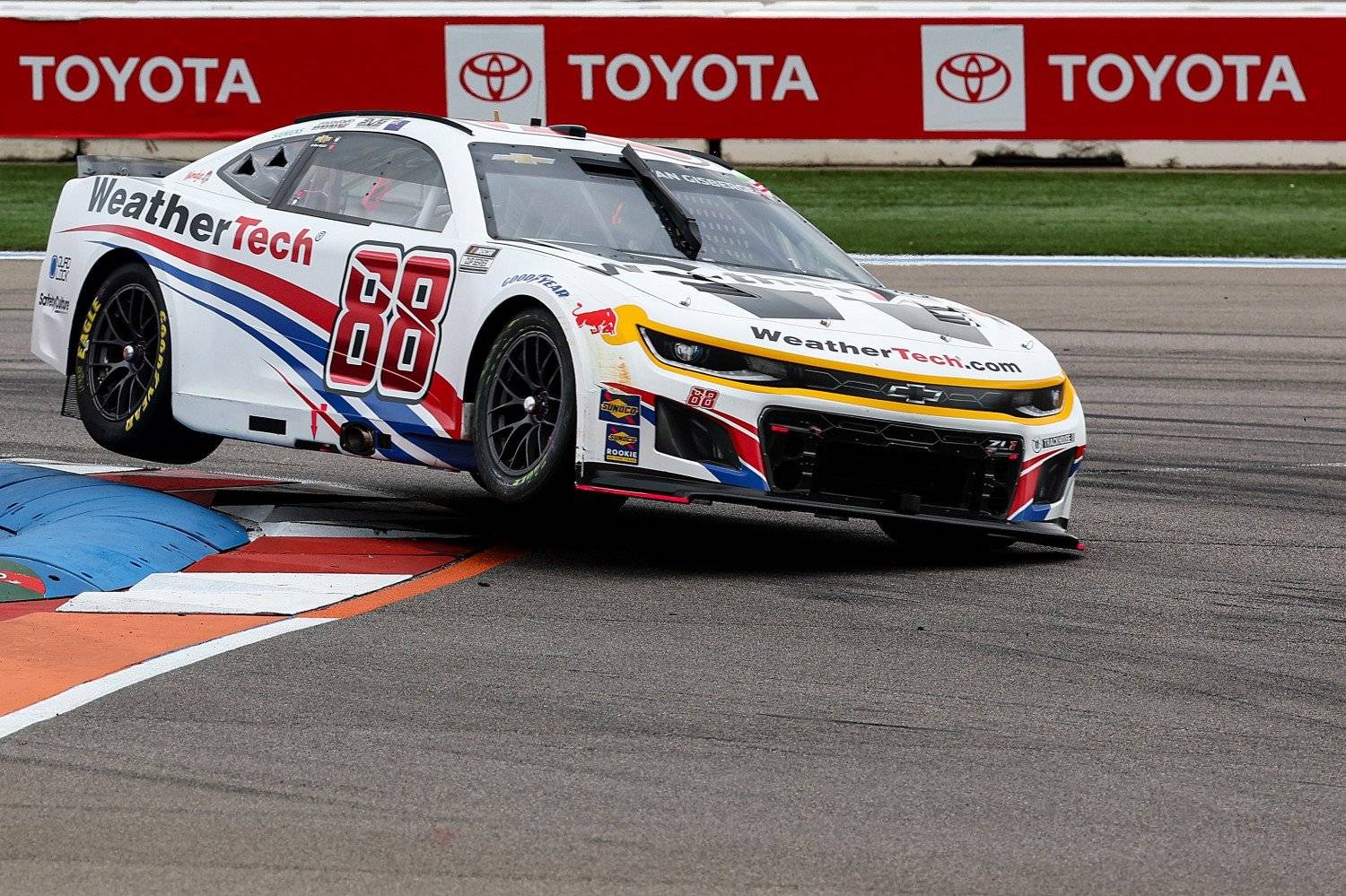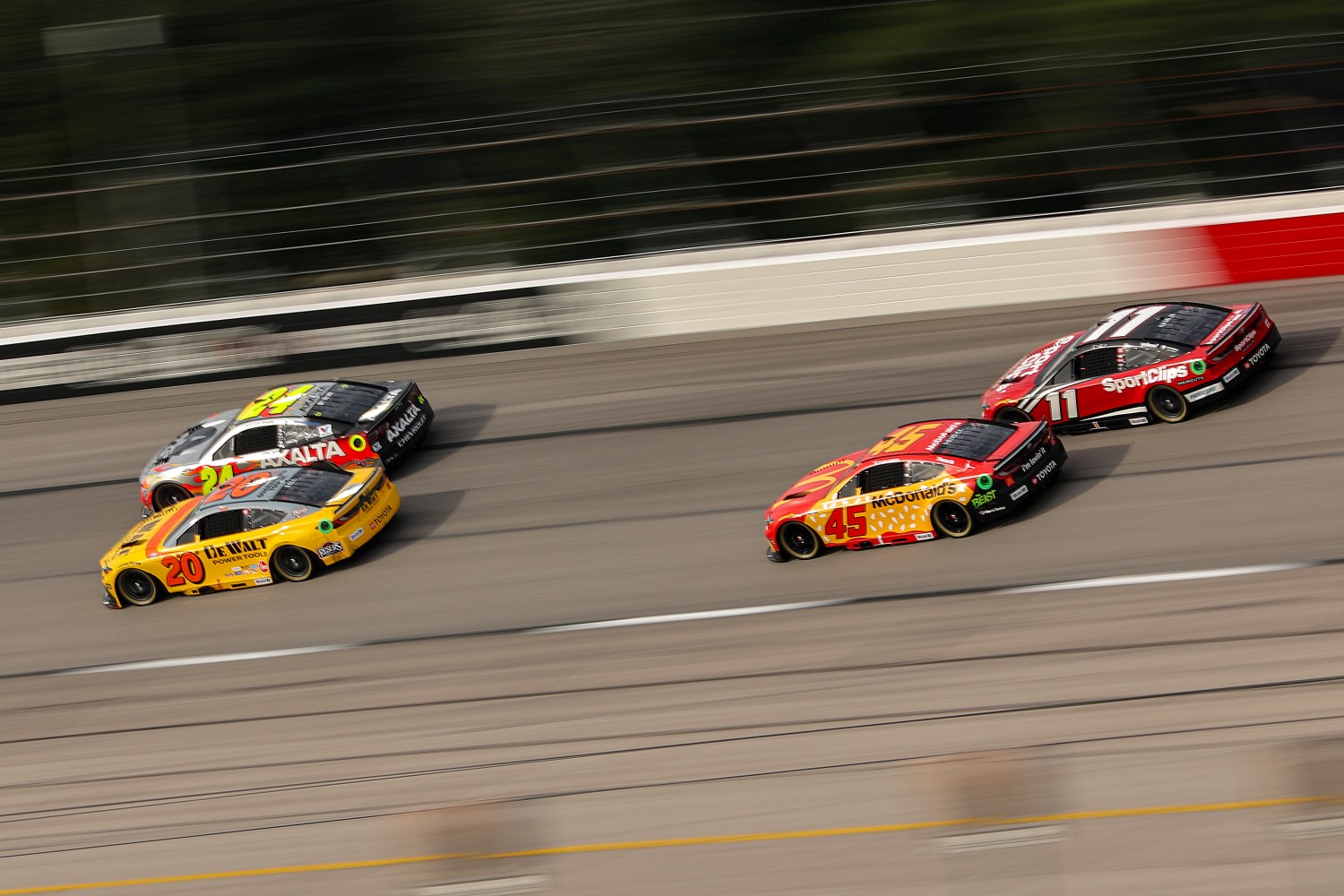NASCAR News: 2026 Cup Series Horsepower Levels (Update)
Kyle Larson apparently does not have a good feel for a race car. He likely would get destroyed in a Formula 1 car against Max Verstappen who connects his brain to every aspect of the car, resulting in demoralizing speed.
Speaking to Frontstretch, Larson said he could not feel the HP difference: “So, I would encourage you all and fans to, like, not over-promote it like it’s fix everything, you know, and so I would, yeah, encourage everybody to kind of temper their expectations, like it’s not way different. I did a test recently… and nobody told me that I had higher horsepower, and I never really realized it, so yeah, so I wouldn’t say it’s going to feel different or look. I think it’ll be better, but it’s not fixed.
“I think I did the test on like Tuesday, and we were flying to wherever race that weekend New Hampshire on a Friday or Saturday, and they’re like, ‘Yeah, what’d you think of the higher horsepower?’ I’m like, ‘We had higher horsepower?”
October 9, 2025
On today’s episode of the Dale Jr. Download, NASCAR President Steve O’Donnell announced that for the 2026 NASCAR Cup Series season, the horsepower level will increase to 750 hp (from 670) at ovals measuring less than 1.5 miles and all road courses.
The list of tracks that will feature the increased level or horsepower: Bowman Gray Stadium, Circuit of the Americas, Phoenix Raceway, Darlington Raceway, Martinsville Speedway, Bristol Motor Speedway, Watkins Glen International, Dover Motor Speedway, Nashville Superspeedway, San Diego Street Course, Sonoma Raceway, North Wilkesboro Speedway, Iowa Speedway, Richmond Raceway, New Hampshire Motor Speedway, World Wide Technology Raceway and Charlotte Motor Speedway Road Course.

Quote from John Probst, NASCAR executive vice president and chief racing development officer, on the feedback taken for this update: “Like any other change that we are considering to the cars, we listen to the fans a lot. We listen to the drivers. We have stakeholders in the broadcast, OEM (manufacturers) and team competition and team business folks, so there’s always no shortage of feedback that we get.
“Our fans are very passionate, they provide very candid feedback, so that all is very important to us. We do listen to it. We are working on a lot of things in the background, we don’t often always talk about them until we’re ready to come out and announce an implementation plan for them. Their feedback is very important.”
O’Donnell explains why 750 HP was chosen
Steve O’Donnell, NASCAR’s chief operating officer, outlined the delicate balance the organization faces in increasing horsepower. “Why not 800? Why not 1,000?” he mused, highlighting the challenge of boosting performance without overhauling the industry. Pushing beyond the current 750 horsepower could cost teams $40-50 million, a financial burden NASCAR aims to avoid. “Our job is to make the right call now while considering the long-term impact,” O’Donnell said.
While the 750-horsepower increase—a roughly 12% boost—promises faster speeds, it raises concerns about engine durability. NASCAR’s rules require engines to last at least two races, but higher horsepower stresses internal components, risking faster wear and costly replacements. This change, driven by months of pressure from drivers seeking better throttle response, teams wanting improved race balance, and fans craving the raw power of the Next Gen era, aims to strike a compromise.
To support the transition, Goodyear will conduct a tire test in early December at North Wilkesboro to gather data for 2026 tire development. The 750-horsepower setup will also be implemented at Nashville Superspeedway’s 1.33-mile concrete oval.
Playoff System to change
O’Donnell took a measured stance on potential changes to the playoff system, emphasizing that no major announcements will come before the 2025 season concludes. “We have rules in place for this year,” he said. “I don’t want to distract from whoever wins the championship. Everyone knew the rules going in. Let’s race, and I’ll stand behind the driver and team that earns the title.”
While O’Donnell kept specific changes under wraps, he hinted at a shift away from the current single-race, winner-takes-all format. He revealed that private conversations with drivers, particularly Christopher Bell, have shaped his thinking.
“Bell doesn’t go on social media to air his thoughts,” O’Donnell noted. “He gives me honest feedback behind closed doors. He’ll say, ‘If I win 10 races in a year, but a couple of guys wreck me in one race, I’m not the champion.’ That’s happened four years in a row. I don’t want a future driver, like a 10-year-old dreaming of NASCAR today, to think the championship hinges on a single race’s luck.”
These discussions suggest NASCAR is seriously considering a playoff format that rewards some consistency while preserving the sport’s competitive spirit.
